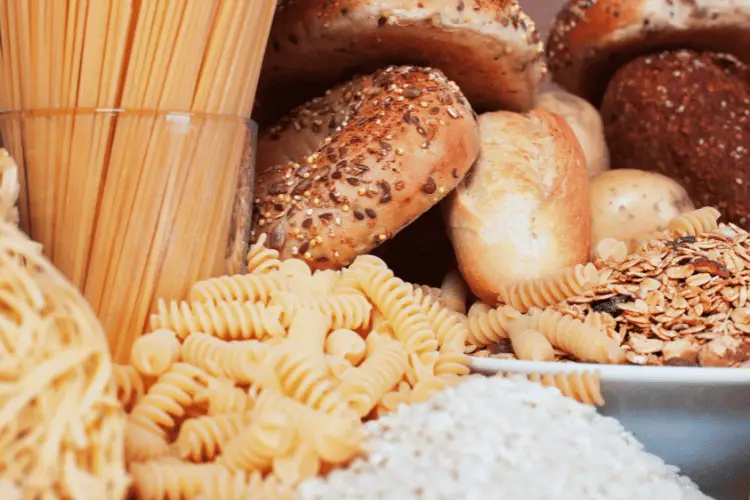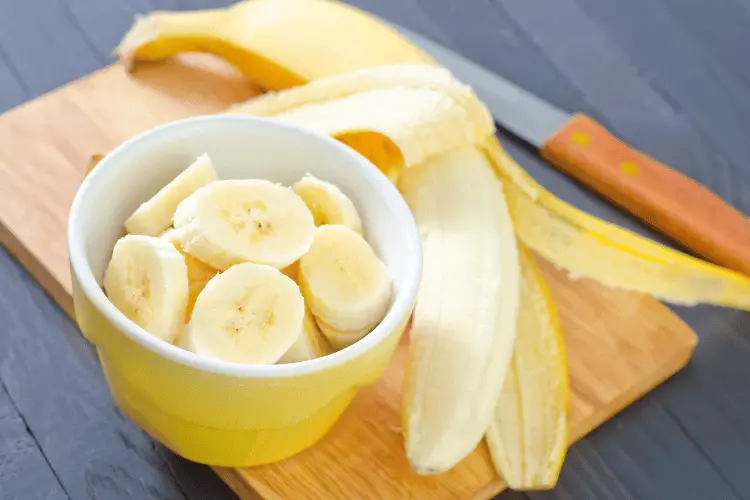Nutrition plays a vital role in maintaining overall health and well-being. Whether you’re slimming down or trying to gain weight, following a nutritional plan can make all the difference.
You might struggle to find the proper eating schedule for your specific needs. You’ll also see that experts disagree on many nutritional topics, which confuses you even more.
In general, we all have some basic knowledge about diet and nutrition. But there are many interesting facts that you might have never heard of.
In this article, we’ll cover some of the most interesting facts about nutrition.
What Does “Calorie” Mean?
The word “calorie” is a popular term among nutritionists and gym rats, but what does it mean?
The word calorie comes from the Latin word “calor,” which means heat. Nicolas Clément, a French chemist, was the first to use this term in the 19th century as a unit of energy.
The term was widely used in physics and chemistry to describe the amount of energy needed to raise the temperature of one gram of water by one degree Celsius.
The inspiration to use the capitalized “Calorie” to denote 1 kcal on food labels came from Atwater’s 1887 essay on food energy in Century magazine and Farmer’s Bulletin 23 in 1894.
The g-calorie was officially recognized in 1896 when it was added to the cm-g-s measurement system as a secondary unit of energy. The nutritional calorie was ingrained in American culture and nutritional policy in the 20th century.
It’s worth noting that the calorie we refer to in nutrition is a kilocalorie (kcal). In other words, if a food item contains 100 calories, it provides 100 kilocalories of energy.
What’s The Origin of the Word “Vitamins”?
The origin of the word vitamins goes back to the early 20th century. The term was coined by Casimir Funk in 1912.
Scientists thought that vitamins contain amino groups. They also thought that vitamins are the essential building blocks for life.
As such, they came up with the name “vitamines” which comes from the Latin word “vita” which means life, and the chemical term “amine.”
As the scientific discoveries progressed, scientists understood that not all vitamins contain amino groups, so they dropped the “e” and the term became “vitamins.”
What’s The Origin of the Term “Carbohydrates”?
The term carbohydrate comes from the combination of “carbo” and “hydrates.”

Carbo refers to carbon, while hydrate refers to water. Carbohydrates were thought to be hydrates of carbon. However, that’s not true. Why?
Because the water molecules in carbohydrates are not intact. Instead, the carbon atoms bond with hydrogen atoms (—H) and hydroxyl groups (—OH). The hydrogen and hydroxyl groups refer to water.
What Are Some Examples of Unusual Diets?
You might have heard about popular diets like vegan, paleo, low-carb, and keto. It’s not a secret that there’s no one-size-fits-all when it comes to diets.
That’s because there are a ton of factors that contribute to weight gain and loss. That includes genetics, habits, food availability, body nature, and hormonal changes.
Surprisingly, there are some crazy diets out there that worked for some. Let’s take a closer look at them.
1. The Baby Food Diet
As the name suggests, the diet involves replacing regular food with jars of pureed baby food. The goal is to consume fewer calories to lose weight.
One serving of baby food includes around 20 to 120 calories. As such, replacing your regular food with baby food jars might lead to short-term weight loss.
However, experts say that the results are only temporary, and adults who opt for this diet usually gain more weight when they shift to their regular food.
2. Sleeping Beauty Diet
Who can consume calories while sleeping? The King of Rock ‘n’ Roll, Elvis Presley, came up with this extreme diet.
The pop star used to take heavy sedatives to sleep for extended periods so that he doesn’t eat and ultimately lose weight. He took this too far as he hired doctors to put him in an artificial coma for days!
We’re not saying you should idolize Elvis when it comes to your health. But the diet is ineffective, not only because it’s dangerous and has serious side effects.
During sleeping, our metabolism significantly declines, so even if you sleep for too long, it doesn’t necessarily mean you’ll burn more calories and lose weight.
3. The Cabbage Soup Diet
This short-term diet involves eating only low-calorie cabbage soup alongside small amounts of other foods for seven days. You might get essential nutrients from the veggies in cabbage soup while ingesting fewer calories, but the results are short term.

Ultimately, you’ll get sick of cabbage soup, and after seven days, you’ll crave your favorite foods. Eventually, you’ll end up eating larger quantities and gaining weight!
4. The Cotton Ball Diet
Do you think the above diets are insane? This one is on another level.
The cotton ball diet involves eating cotton balls dipped in water or juice. The idea is to feel full without consuming many calories to encourage weight loss.
The diet is too dangerous and can lead to malnutrition. Besides, consuming non-food items like cotton balls can cause intestinal blockage and other serious side effects.
5. The Cigarette Diet
In the 1920s, cigarette companies had a new marketing strategy; light a cigarette, and you won’t feel like eating anymore. Lucky Strike even had a hugely successful campaign named “Reach for a Lucky Instead of a Sweet.”
The idea behind this crazy diet is that nicotine; the addictive substance in cigarettes, is an appetite suppressant. As such, smoking cigarettes can eventually lead to consuming fewer calories and weight loss.
The diet is dangerous due to the several smoking health risks. I guess nobody wants to lose weight by increasing his risk of developing lung cancer.
How Long Can Someone Survive Without Food?
If you’ve tried intermittent fasting before, you must know how hard it is to avoid eating for hours. But did you know you can survive up to one or two months without food?
While scientists didn’t study starvation through traditional experiments (since it’s not ethical), they learned about starvation from hunger strikes and famine periods.
Typically, a healthy adult male weighing around 154 pounds should have enough calories to survive hunger for one to three months.
That said, some people volunteered and stopped eating to participate in hunger strikes and only survived for 45 to 61 days. This suggests that it’s unlikely for someone to survive for three months.
It’s worth noting that the time a person can survive without food significantly varies depending on many factors. These factors include age, weight, muscle mass, overall health, hydration, and body fat.
During starvation, the body shifts to using stored fat for energy. When the body uses up all the fat reserves, it begins breaking down muscle tissue for fuel. Ultimately, this process leads to severe muscle atrophy and organ damage.
Food isn’t the only factor affecting survival though. Hydration plays a significant role in determining how long someone can survive without food.
Generally speaking, humans can’t survive more than three days without water. That says so much about the significance of hydration. It’s essential to regulate body temperature and control various metabolic processes.
Miscellaneous Facts About Food
In this section, we’ll quickly mention some interesting nutritional facts that you might have never heard of.
Bananas are Berries

Botanists define fruits as the part of the flowering plant that contains seeds developed from the ovaries. A berry is a fleshy fruit that develops from a single ovary of a single flower.
Surprisingly, bananas meet this definition! They have a fleshy soft texture, develop from a single ovary, and have many seeds.
So if you still think berries are only strawberries and blueberries, we regret to tell you that you’ve been wrong this whole time. Even strawberries and blueberries aren’t berries. How?
A strawberry is classified as an aggregate fruit. That’s because it consists of multiple tiny fruits embedded in a receptacle. The same applies for berries.
You Can’t Overcook Mushrooms
Mushrooms contain a natural polymer named chitin in their cell walls. Chitin is pretty different from the cellulose in plant cell walls, that’s why mushrooms have a unique texture.
The chitin polymer is incredibly heat stable. As such, the texture of mushrooms doesn’t change a lot once you start cooking them. So if you’re a bad cook, a mushroom is a perfect ingredient to add to your recipes.
The Stickers on Fruit Are Safe to Eat
You might have ingested food stickers before by mistake, but they’re actually edible. We’re not saying you should eat them on purpose, it’s always best to remove and discard them.
But as long as the label printer follows the FDA guidelines and regulations, the sticker is safe.
The Kiwi Fruit Skin Is Edible
When you eat kiwi, you usually consume the green part of the fruit. But did you know that the skin of a kiwi fruit is edible too? Although some find the texture fuzzy and unappealing, the kiwi fruit skin is edible and rich in Vitamin E, C, and fiber.
To Sum Up
As scientists still research various nutritional topics, we’re about to witness even more interesting facts about nutrition. It’s going to be an interesting future, for sure.


